 What’s next for Mozilla Webmaker? What have we accomplished so far? Where do we go next in 2012 and 2013? And how do we make contribution and community engagement the metrics that matter most?
What’s next for Mozilla Webmaker? What have we accomplished so far? Where do we go next in 2012 and 2013? And how do we make contribution and community engagement the metrics that matter most?
This presentation from Mark Surman lays out the story and poses the key questions. Presented in yesterday’s weekly Mozilla Webmaker call, these slides were prepared for the Mozilla Foundation July 2012 board meeting as part of a mid-year review.
- Watch the slidecast. Video recording of Mark presenting in yesterday’s Mozilla Webmaker call.
- Download the PDF. Or access versions on SlideShare or Flickr.
- Check out the Webmaker 2012 planning wiki.
What’s the goal?
- Big goal: move millions of people from using the web to making the web.
- Short-term: focus on novices. Especially youth and teens, without over-simplifying. Novices can be any age, with projects scaled from beginner, intermediate to advanced.
What have we done so far?
- Rolled everything into a single offering. Taken the best of what we’ve done over the last two years and rolled it into a single offering: Mozilla Webmaker.
- Shipped the first version of Webmaker. We’ve shipped the initial Minimum Viable Prodcut (MVP) for Webmaker. Next up: test and iterate on Webmaker software like Thimble, Popcorn and the X-Ray Goggles. Focus on learning. Build community.
- Shipped Thimble. We have extended from X-Ray Goggles to Thimble. We now have two tools for HTML, and an expanded learning model.
- Shipped Popcorn as app. Mozilla Popcorn has pivoted from being primarily a Javascript library for developers (Popcorn.js) to an app that lets any user edit web media in real time — pulling video, audio, pictures, maps, data, etc. from APIs into a polished video.
- “Apps that teach.” Thimble and Popcorn include templates and starter content that also teach you things. Its software that embodies the principle of “learning by making, remixing and doing.”
- Built labs and contributor pipelines. Mozilla Webmaker programs like HiveNYC, OpenNews and StoryCamp provide feedback, new ideas, and a source of our best community contributors.
- Engagement through 600+ learning events. The Summer Code Party began as a napkin sketch in March, and was delivered in June.
- Scaled up community contributors. From ~100 to ~1000 in 6 months. A clear offering + call to action = more contributors, mostly instructors.
What has the reception been so far?
- Positive press coverage. Including coverage that positions Webmaker as a legitimate offering next to other new core Mozilla products (like B2G).
- Our calls to action need to come through more. The core Webmaker story is coming across. But our calls to participation aren’t coming across as strongly. Need to fix that.
- Webmaker as a big tent. The message that Webmaker is a “big tent” for teaching tech needs to come across more forcefully, as something we’re doing together with other orgs and communities — not just a conventional product produced by Mozilla.
Contribution as our #1 metric
Contributors are the key resource to achieve our goals. And the best way to evaluate efficacy and build momentum. We want to elevate contributors to partners and co-creators to help shape the program.
- Deepen engagement. The community has already grown. Now we need to deepen and improve the connection and build from there. We’ll involve ReMo and active contributors, finding better ways for new people to plug in.
- Improve contributor workflow. Focus on on-ramps, documentation and modeling in Q3 and Q4. For Thimble, and across the organization.
- User testing. Making an amazing offering requires usage stats and quality feedback, testing and surveys. Plus dashboards to help determine trends and act on what we learn.
- Badges. Webmaker badges are the key to showing learning outcomes, and for proving knowledge of basic web mechanics and creativity skills.
What’s next?
- Move into ‘real’ programming. Like Javascript.
- Truly go global. Build new geographies.
- Connect mobile. Webmaking projects for mobile. The web as the platform.


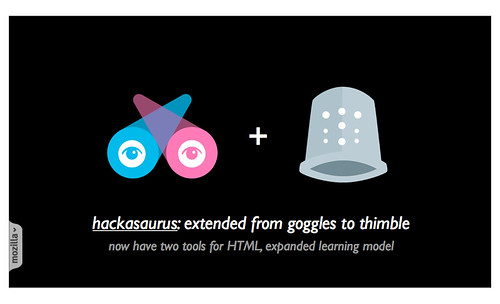
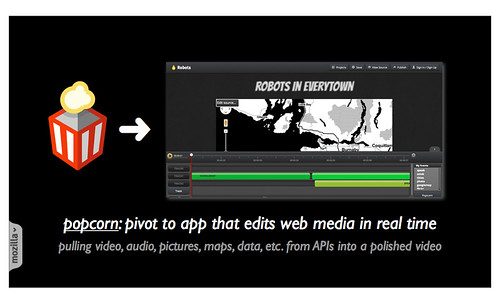

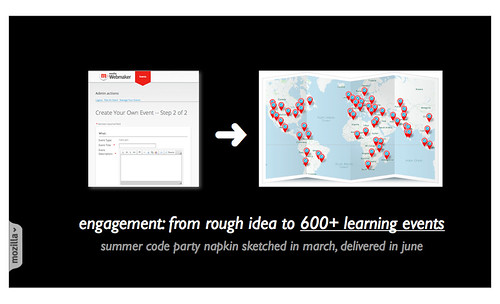
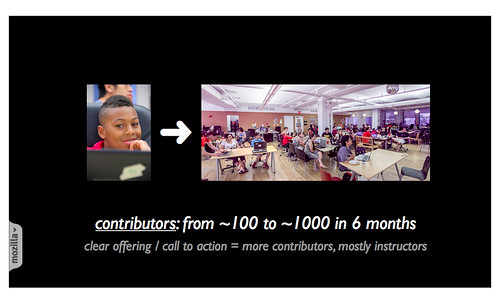
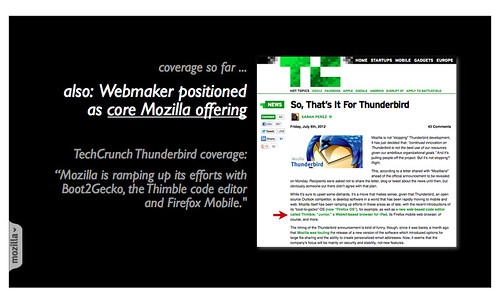

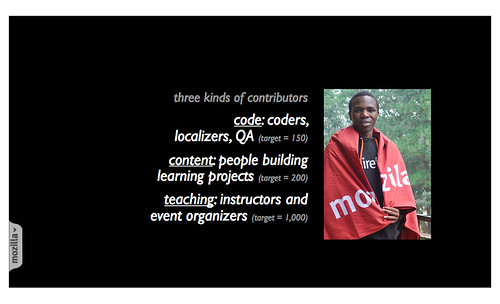

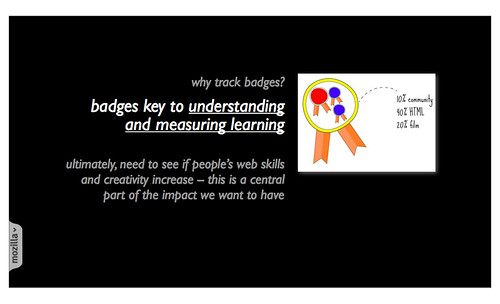
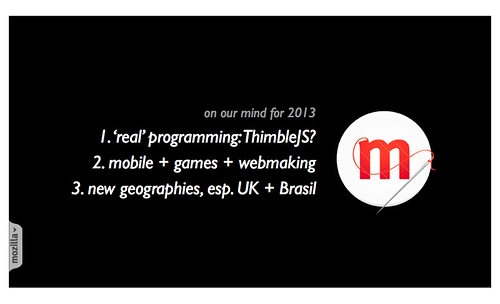
2 comments